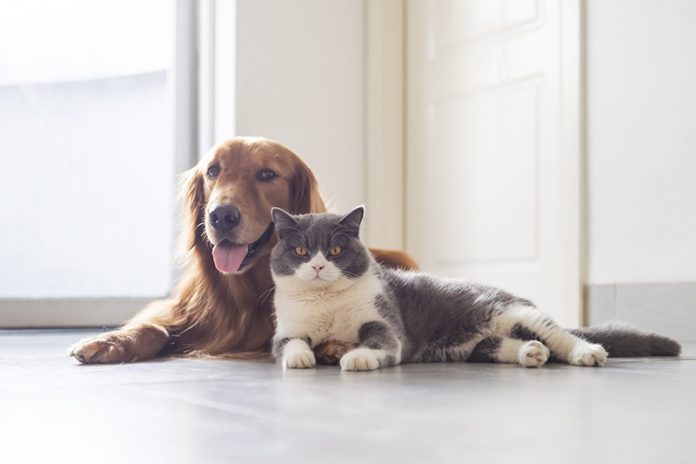Exotic pets are often compact, quiet, and don’t require outdoor space, making them ideal pets for apartment living since they don’t bother nearby neighbors or damage your home. They are also just as fun and loving as traditional pets like dogs and cats. Browse through 12 types of exotic pets and why they are suitable for apartments, condominiums, and other small living spaces.
Rabbits
There are nearly 50 breeds of rabbits that people like to keep as a pet. Most are social animals that want to keep you company. Rabbits are a suitable option for apartment living since they can be litter-box trained, groom themselves, and are relatively quiet. Many people allow their rabbits to roam free in their homes, which is a good way for them to get exercise. One drawback to keeping rabbits is that they like to chew and dig. You will need to bunny-proof your home by making sure there are no exposed cords and only allowing the rabbit to roam in carpet or rug-free rooms.
Ferrets
Ferrets love to play with humans and each other. To accommodate their playful nature, provide them with a large cage. They make excellent apartment dwellers because they sleep most of the day while the owner is away for the day. They are quiet creatures but also like to hide and get into mischief. You will need to make sure your home is ferret-proofed to prevent escapes or unsafe hiding spots (like in the oven).
Rats
Rats are friendly, quiet, and intelligent animals. Their small size and relatively easy care make them perfect for smaller homes. Their cage needs are not too demanding: about 2 cubic feet per rat. They tend to be easily tamed and often like to hang out on people’s shoulders or laps. Rats will likely sleep most of the day if you leave the house. They are most active at night but will wake for interaction during the day.
Mice
Mice do not require a lot of space or a large cage. Their size requirements are just one of the reasons why they make great pets for small spaces. They are also quiet, fastidious self groomers, and they are relatively easy to care for. They are also intelligent, and their playful antics are fun to watch. While they are skittish, they can be tamed if handled regularly and hand-fed.
Hamsters
No-pet apartment leases usually allow hamsters, and they are an ideal apartment pet since they do not require a lot of space. They are quiet, clean, low maintenance, and don’t shed. Most allergy sufferers can live comfortably with a hamster in the house.1 Hamsters are easy to tame with regular handling. All a hamster needs is a 2-cubic-feet cage equipped with an exercise wheel, items to chew, absorbent bedding, a hiding spot, food, and water.
Guinea Pigs
Guinea pigs crave socialization and are typically easy to handle. They make a “wheek” sound as a vocalization, but it is not loud enough to disturb neighbors in an apartment setting. Their enclosures are also a manageable size. At the minimum, these rodents need a cage that encompasses about 7-8 square feet. Height is not critical; they don’t tend to climb, so it does not need to be taller than a foot or 18 inches. They appreciate out-of-cage time to socialize, explore, and play. Like other pets allowed to roam in your home, make sure there are no exposed wires or toxic plants and protect wooden fixtures.
Reptiles
Reptiles like smaller lizards and snakes are not as social as mammals, but they can be good for small spaces. They make no noise and are relatively easy to care for. Lizard species that are good for beginners include leopard geckos, crested geckos, house geckos, bearded dragons, and anoles. Snake species that do not require large enclosures include corn snakes, king snakes, milk snakes, and ball pythons.
Hedgehogs
Hedgehogs do not need a vast cage; a good size for an enclosure is at least 2 feet by 3 feet. Primarily nocturnal, they will not mind if you are away during the day. Hedgehogs are quiet and produce very little dander, making them the right pet for people with allergies. They’re typically gentle and generally solitary. A drawback is that there are some parts of the U.S. where they are illegal or require permits; check your state laws on exotic pets before you adopt one.
Frogs
Many frog species don’t need much space, so they are an ideal choice for small apartments. The ideal tank size for most frogs is a 10-gallon or 20-gallon tank. If you are looking for a pet to look at and display, then this is the right choice for you. They are also low-maintenance pets, only eating a few times a week. There are several types of pet frogs: aquatic frogs (African clawed frogs), semi-aquatic frogs (oriental fire-bellied toads), tree frogs (American green tree frogs), and large but sedentary frogs (Pacman frogs). Some male frogs sing, so they’re not a completely quiet pet, but the sound is not loud enough to offend the neighbors.
Hermit Crabs
Hermit crabs are a low-commitment pet. They are great for apartment living since they make no noise, are hypoallergenic, and low-maintenance. Hermit crabs are interesting to watch; they move from one shell to another. They are social and do best when placed with other hermit crabs if their tank is spacious enough. House an individual in a 10- to 20-gallon tank.
Tarantulas
If you’re a fan of spiders, a pet tarantula can be a fascinating addition to your home. Tarantulas are quiet and typically only need a 10- to 20-gallon aquarium to thrive. They are low maintenance, only need food every other day or so, and do not mind if you are not around much. Although the venom of a pet tarantula is only mildly toxic (similar to a bee sting), you should not handle it.
Chinchillas
Chinchillas are small rodents with playful personalities. They make good apartment dwellers since they are clean and relatively odor-free. They are nocturnal, so if you are not home during the day, they will not miss you much. With gentle handling from a young age, they can bond closely with you. House a single chinchilla in a cage that is at least 2 feet by 2 feet.
Exotic Pets to Avoid
Exotic pets can be beautiful, unique, and some can be trained to do tricks, talk, or retrieve items for you. Generally, pets that require a large enclosure and outside-of-cage time like parrots need a space more extensive than a small apartment for free-flying. Some birds like macaws and Amazons are too loud, known for disrupting the neighbors.
Monkeys are exciting, but a significant downside is they need a lot of mental stimulation and exercise. Primates often fulfill their enrichment requirements by destroying property or wreaking havoc in your house. Similarly, pets like pot-bellied pigs might be naturally inclined to burrow and damage a rental property. Aquatic turtles may be okay to keep in an apartment as babies, but they can grow very large and may require a tank that is at least 120 gallons, which can be a drain on space.


























